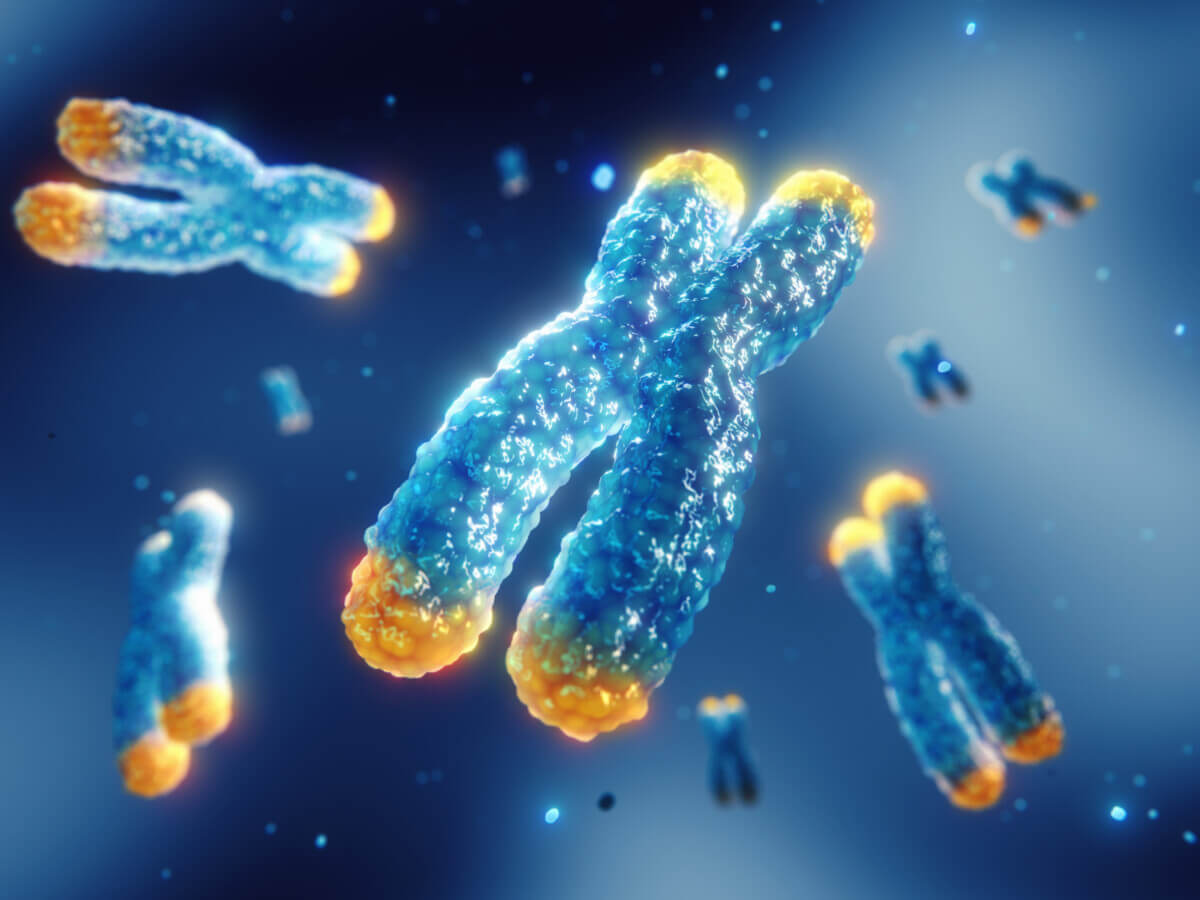
Telomeres are found on both ends of chromosomes, 3d illustration. Telomere length is affected by lifestyle and has direct impact on human health and lifespan. (Image by nobeastsofierce on Shutterstock)
LA JOLLA, Calif. — Researchers from the Salk Institute have developed a groundbreaking technique called Telo-seq that is set to revolutionize our understanding of telomeres, the protective caps at the ends of our chromosomes. Telomeres play a crucial role in maintaining the integrity of our genetic material, but their repetitive nature and length have long posed challenges for scientists seeking to study them in detail. Telo-seq overcomes these hurdles by combining a clever molecular biology approach with state-of-the-art long-read sequencing technology.
So, what exactly is Telo-seq? In essence, it's a method that allows researchers to sequence and analyze entire telomeres, along with a portion of the adjacent subtelomeric DNA, at an unprecedented level of resolution. The technique involves attaching specialized adapters to the telomeres, digesting the surrounding DNA while leaving the telomeres intact, and then using Oxford Nanopore Technologies' long-read sequencing to read through the lengthy, repetitive telomeric sequences. Powerful computational tools then help to identify and characterize the telomeres within the wealth of generated data.
This innovative approach, recently published in the journal Nature Methods, enables scientists to probe the composition and length of telomeres in a way that was previously impossible. By providing a high-resolution view of these crucial structures, Telo-seq promises to shed new light on the complex dynamics of telomeres during human development, aging, and disease.
Scientists demonstrated the capabilities of Telo-seq across a range of cell types, including cancer cells, aging cells, and even induced pluripotent stem cells. Their findings reveal striking variations in telomere length not only between different cell types but also among individual chromosome arms and even between the maternal and paternal alleles of the same chromosome.
Methodology
The power of Telo-seq lies in its unique combination of molecular biology techniques and advanced sequencing technology. The process begins by attaching specialized adapters to the telomeres, which serve as molecular handles for the subsequent steps. The DNA is then digested with enzymes that cut at specific sites, leaving the telomeres intact.
Next, the researchers employ Oxford Nanopore Technologies' long-read sequencing, which allows for the reading of much longer stretches of DNA compared to traditional sequencing methods. This is crucial for accurately measuring the length of telomeres, which can extend for thousands of base pairs. Finally, sophisticated computational algorithms are used to identify and analyze the telomeric sequences within the vast amount of data generated by the sequencing process.
Results
Applying Telo-seq to a diverse array of cell types, the researchers uncovered a treasure trove of new insights into telomere biology. They found that telomere length can vary dramatically between different chromosome arms within the same cell, with some telomeres being up to three times longer than others. Even more surprisingly, they discovered that the maternal and paternal alleles of the same chromosome can have significantly different telomere lengths.
The team also tracked telomere dynamics during the aging process, revealing a steady decline in telomere length with increasing population doublings of cells in culture. Remarkably, Telo-seq was sensitive enough to detect telomere shortening in cells that were only five population doublings apart, showcasing its potential for fine-grained analysis of aging processes.
In a fascinating application to cancer biology, the researchers used Telo-seq to compare telomeres in cancer cells that maintain their telomeres through different mechanisms. They found that Telo-seq could reliably distinguish between cells using the telomerase enzyme and those relying on the alternative lengthening of telomeres (ALT) pathway, a crucial piece of information for developing targeted cancer therapies.
Limitations
While Telo-seq represents a major advance in telomere research, the authors acknowledge some limitations of their current study. The accuracy of measuring telomere length for specific chromosome arms depends on several factors, including the length of the subtelomeric sequence, its similarity to other subtelomeres, and how closely the sample matches the reference genome used for mapping the sequencing reads.
Additionally, the researchers note that to comprehensively compare telomere lengths between chromosome arms across a population, a larger and more diverse cohort of samples will be needed. They also point out that Telo-seq currently provides a snapshot of telomere length at a single point in time, and further developments will be needed to track telomere dynamics in real-time within living cells.
Discussion: Telomere Revolution Begins
The development of Telo-seq marks the beginning of a new era in telomere research, one in which scientists can probe the intricacies of these vital structures with unprecedented precision. By revealing the surprising heterogeneity of telomere length within cells and providing a powerful tool for tracking telomere dynamics during aging and disease, Telo-seq opens up exciting new avenues for basic research and potential clinical applications.
As the authors conclude in their paper, Telo-seq sets the stage for investigating human telomere biology at an unparalleled level of detail. From unraveling the fundamental mechanisms of aging to developing personalized therapies for telomere-related disorders and cancer, the possibilities unlocked by this innovative technique are truly vast. With Telo-seq in hand, scientists are poised to make plenty of new discoveries that could transform our understanding of human health and longevity.










